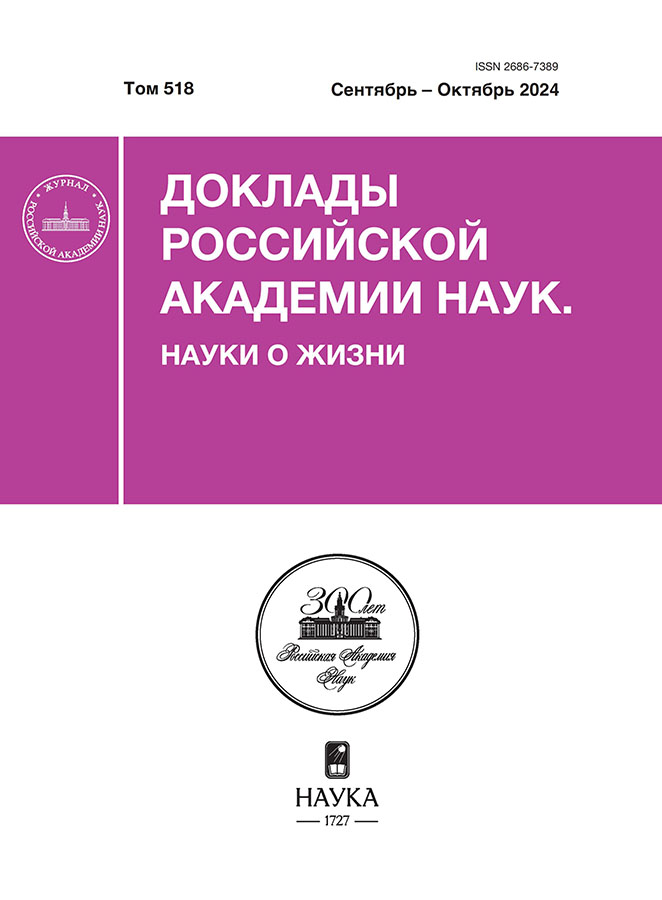Cheetah Acinonyx pardinensis (Felidae, Carnivora)from the Early Pleistocene of Crimea (Taurida cave)
- Авторлар: Gimranov D.O.1, Madurell-Malapeira J.2, Jiangzuo Q.3, Lavrov A.V.4, Lopatin A.V.4
-
Мекемелер:
- Institute of Plant and Animal Ecology, Ural Branch, Russian Academy of Sciences
- University of Florence
- Instituteof Vertebrate Paleontology and Paleoanthropology, Chinese Academy of Sciences
- Borissiak Paleontological Institute, Russian Academy of Sciences
- Шығарылым: Том 518, № 1 (2024)
- Беттер: 70-75
- Бөлім: Articles
- URL: https://permmedjournal.ru/2686-7389/article/view/651401
- DOI: https://doi.org/10.31857/S2686738924050125
- ID: 651401
Дәйексөз келтіру
Аннотация
A mandible fragment of Acinonyx pardinensis (Croizet et Jobert, 1828) is described from the Early Pleistocene locality in the Taurida cave (Crimea, Late Villafranchian, about 1.8–1.5 Ma). This is the first discovery of the genus Acinonyx in the Pleistocene of Crimea. Along with other felids, such as Homotherium, Megantereon, Panthera, Lynx, and Puma, cheetahs were typical representatives of the Late Villafranchian faunas of Eurasia. In the Taurida locality, Acinonyx pardinensis is co-occurred with Homotherium crenatidens, Megantereon adroveri, and Lynx issiodorensis.
Негізгі сөздер
Толық мәтін
Авторлар туралы
D. Gimranov
Institute of Plant and Animal Ecology, Ural Branch, Russian Academy of Sciences
Хат алмасуға жауапты Автор.
Email: djulfa250@rambler.ru
Ресей, Yekaterinburg
J. Madurell-Malapeira
University of Florence
Email: djulfa250@rambler.ru
Earth Science Department
Италия, FlorenceQ. Jiangzuo
Instituteof Vertebrate Paleontology and Paleoanthropology, Chinese Academy of Sciences
Email: djulfa250@rambler.ru
Key Laboratory of Vertebrate Evolution and Human Origins of Chinese Academy of Sciences
ҚХР, BeijingA. Lavrov
Borissiak Paleontological Institute, Russian Academy of Sciences
Email: djulfa250@rambler.ru
Ресей, Moscow
A. Lopatin
Borissiak Paleontological Institute, Russian Academy of Sciences
Email: djulfa250@rambler.ru
Academician of the RAS
Ресей, MoscowӘдебиет тізімі
- Werdelin L., Lewis M.E. Koobi fora research project. V. 7. Carnivora. San Francisco: California Academy of Sciences, 2013.
- Van Valkenburgh B., Pang B., Cherin M., Rook L. The cheetah: evolutionary history and paleoecology. In: Cheetahs: biology and conservation. Amsterdam: Elsevier Inc., 2018. P. 25–32.
- Schmidt-Küntzel A., Dalton D.L., Menotti-Raymond M. et al. Conservation genetics of the cheetah: genetic history and implications for conservation. In: Cheetahs: biology and conservation. Amsterdam: Elsevier Inc., 2018. P. 71–92.
- Zhang K., Shen X.-L., Liu K.-Z. et al. The modern classification of Felidae – combining molecular phylogeny framework and fossil evidence // Chinese Journal of Zoology. 2023. V. 58. № 1. P. 1–29.
- Cherin M., Iurino D.A., Sardella R., Rook L. Acinonyx pardinensis (Carnivora, Felidae) from the Early Pleistocene of Pantalla (Italy): predatory behavior and ecological role of the giant Plio–Pleistocene cheetah // Quaternary Science Reviews. 2014. V. 87. P. 82–97.
- Werdelin L., Peigné S. Carnivora. In: Cenozoic Mammals of Africa. Berkeley and London: University of California Press, 2010. P. 603–658.
- Geraads D. How old is the cheetah skull shape? The case of Acinonyx pardinensis (Mammalia, Felidae) // Geobios. 2014. V. 47. P. 39–44.
- Cherin M., Iurino D.A., Zanatta M. et al. Synchrotron radiation reveals the identity of the large felid from Monte Argentario (Early Pleistocene, Italy) // Scientific Reports. 2018. V. 8. Art. 8338. P. 1–10. https://doi.org/10.1038/s41598-018-26698-6
- Jiangzuo Q., Wang Y., Madurell-Malapeira J. et al. Massive early Middle Pleistocene cheetah from eastern Asia shed light onto the evolution of Acinonyx in Eurasia // Quaternary Science Reviews. 2024. V. 332. Art. 108661. P. 1–14. https://doi.org/10.1016/j.quascirev.2024.108661
- Hemmer H., Kahlke R.D. New results on felids from the Early Pleistocene site of Untermassfeld. In: The Pleistocene of Untermassfeld near Meiningen (Thüringen, Germany). Part 5. Mainz: Verlag des Römisch-Germanischen Zentralmuseums, 2022. Р. 1465–1566.
- Лопатин А.В., Вислобокова И.А., Лавров А.В. и др. Пещера Таврида – новое местонахождение раннеплейстоценовых позвоночных в Крыму // Доклады Академии наук. 2019. Т. 485. № 3. С. 381–385.
- Gimranov D., Lavrov A., Prat-Vericat M. et al. Ursus etruscus from the late Early Pleistocene of the Taurida cave (Crimean Peninsula) // Historical Biology. 2023. V. 35. № 6. P. 843–856.
- Сотникова М.В., Байгушева В.С., Титов В.В. Хищные млекопитающие хапровского фаунистического комплекса и их стратиграфическое значение // Стратиграфия. Геологическая корреляция. 2002. Т. 10. № 4. С. 62–78.
- Palmqvist P., Torregrosa V., Pérez-Claros J.A. et al. A re-evaluation of the diversity of Megantereon (Mammalia, Carnivora, Machairodontinae) and the problem of species identification in extinct carnivores // Journal of Vertebrate Paleontology. 2007. V. 27. № 1. P. 160–175.
- Antón M., Salesa M.J., Galobart A., Tseng Z.J. The Plio-Pleistocene scimitar-toothed felid genus Homotherium Fabrini, 1890 (Machairodontinae, Homotherini): diversity, palaeogeography and taxonomic implications // Quaternary Science Reviews. 2014. V. 96. P. 259–268.
- Mecozzi B., Sardella R., Boscaini A. et al. The tale of a short-tailed cat: new outstanding Late Pleistocene fossils of Lynx pardinus from southern Italy // Quaternary Science Reviews. 2021. V. 262. Art. 106840. P. 1–17. https://doi.org/10.1016/j.quascirev.2021.106840
- Ghezzo E., Rook L. The remarkable Panthera pardus (Felidae, Mammalia) record from Equi (Massa, Italy): taphonomy, morphology, and paleoecology // Quaternary Science Reviews. 2015. V. 110. P. 131–151.
- Bonifay M.F. Carnivores quaternaires du Sud-Est de la France. Paris: Muséum national d’Histoire naturelle, 1971.
- Mol D., Logchem W. van, Vos J. de. New record of the European jaguar, Panthera onca gombaszoegensis (Kretzoi, 1938), from the Plio-Pleistocene of Langenboom (The Netherlands) // Cainozoic Research. 2011. V. 8. P. 35–40.
- Viret J. Le loess à bancs durcis de Saint-Vallier (Drôme), et sa faune de mammifères villafranchiens // Nouvelles Archives du Muséum d’Histoire naturelle de Lyon. 1954. V. 4. P. 1–200.
Қосымша файлдар











